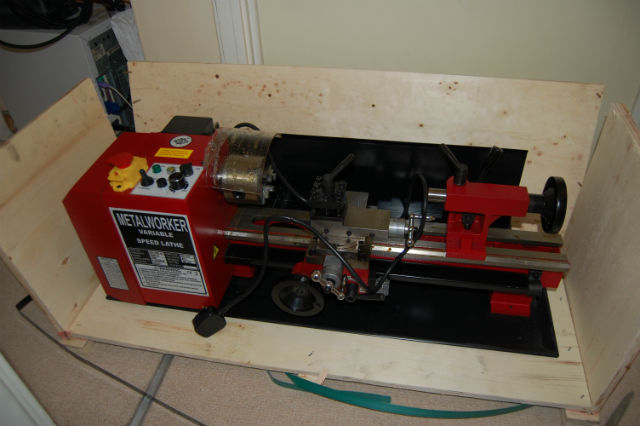Ok, I am sure that if you are reading this, you are at least vaguely familiar with tools and will have an idea of the reputation of Chinese machine tools and even Chinese tools in general.
Lets face it, the vast majority of Chinese tools are complete junk. (and I say this with all possible respect considering the nationality of my own wife!!).
I want to take a few moments to explain the reasoning behind my choice of lathe.
The Chinese factories are contract builders. they manufacture tools to the specification they are given. if someone wants to sell the cheapest possible lathe and doesn't give a monkeys about quality, then they can make it to a very poor specification. they will leave all the casting sand on the castings, they wont quality check anything! the motor and electrical components will all be made to the lowest specification.
Or, the importer can ask for something a bit better! for a bit more money, the manufacturer will fit a decent motor. they will clean the castings properly. give it a reasonable coat of paint and generally take a bit more care over putting it together.
The bog standard C3 model is also available in the UK. its sold under various brand names. The one I saw was sold by Machine Mart under the Clarke brand. Clarke CL300M. its actually basically the same lathe as the one I have, but made to the lowest possible specification.
The one I actually went for was imported by ArcEurotrade near Leicester. Sieg SC3
Bed length, On a centre lather the length of the bed is measured by the distance between a dead centre in the headstock and the tailstock. The Chinese lathes of this size are generically referred to as the 7x lathes. the machine mart version is (I think) 7x12 (7 inch swing and 12 inches between centres). There are lathes that pretend to be 10 inches between centres but are actually only 8. this is really insufficient. by the time you have got a 3 jaw chuck on the spindle and a drill chuck in the tail stock and then a drill bit, you are only left with a couple of inches to do actual work!
Mine is a 14 inch long bed version. I must admit that I very rarely have any cause to do any work longer than about 3 inches, but its really nice to be able to park the tailstock right out of the way. There was (is?) a 16 inch version available from Little machine shop in the US and the bed is amazingly the bed was (is?) available as a spare part! (it was very tempting but I just don't need it!)
The tailstock on mine has a cam lock with a lever. the cheaper versions are still being sold with just a nut to tighten (and a very awkward-to-get-to nut it was too!)
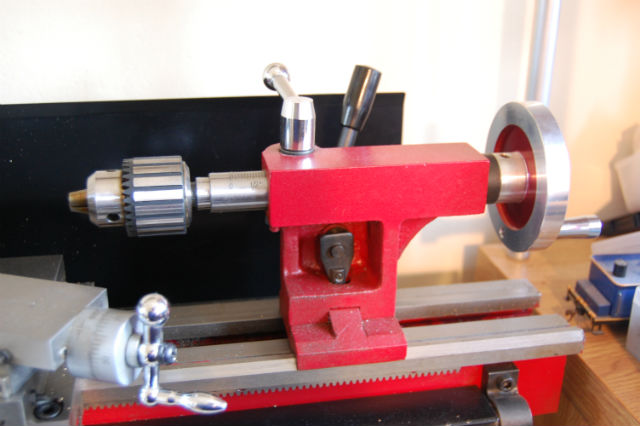
The cheaper versions have variable speed with a 300w motor and a 2 speed gearbox. and boy does it howl!! My wife is a music teacher and I wanted to be able to work upstairs in my workshop while she was giving lessons downstairs. The posh versions come with a 500w brushless DC motor which is powerful enough to drive the spindle directly, completely doing away with the gearbox. Its worth noting at this point that those 2 speed gearboxes are a real weak point to the cheaper and earlier models. the small gears break on a regular basis and are a complete pain in the neck to replace.
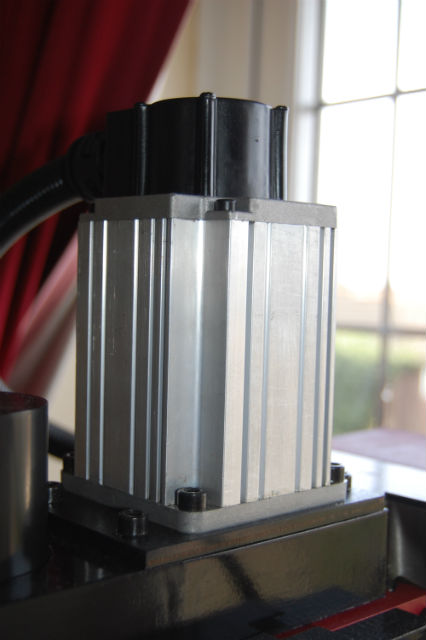
It was a very proud day when I finally ordered it and an even prouder day when the crate arrived. amazingly the courier helped me carry it up the stairs!! initial impressions were very good. I had heard stories that Sieg used a rather disgusting red grease to protect the machines in transit. there was no sign of that. just a fairly light machine grease on the bed.
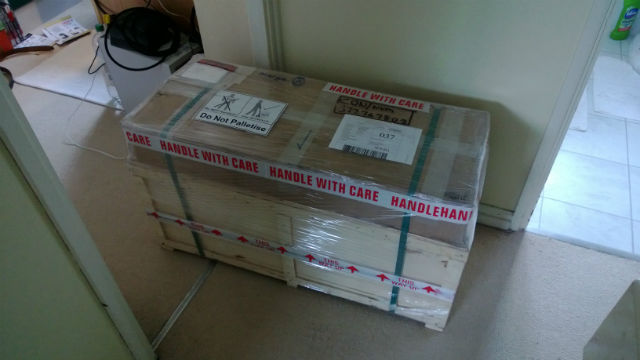
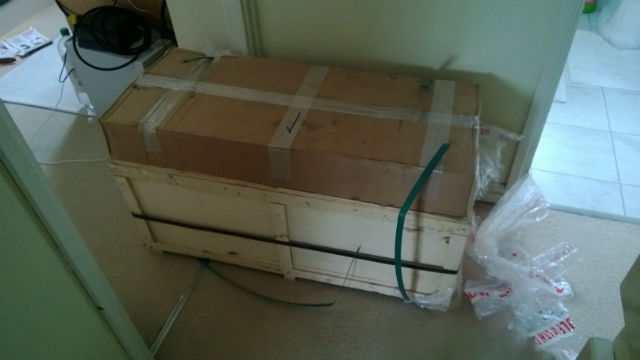
It took about an hour to put on all the handles and get comfortable with the machine. The first turn on was a big moment for me!
then came the relatively simple task of getting used to the machine.
That was a year ago and I can report without a shadow of doubt that its an excellent machine. if i were to go out tomorrow and purchase another machine of its size then I wouldn't hesitate to go for exactly the same model.
Over the course of the year I have purchased a series of accessories for it.
Starting with the 4 jaw chuck. I have heard mixed reports of the after market chucks, but the one I have is pretty good. It has quite a fine thread on the screws and I can dial in a part relatively easily.

Next up is the face plate. this is one of those tools that spends 99.99999999% of the time it never comes out of its box but the rare occasions it does make an appearance, it has already proven itself to be an invaluable tool.
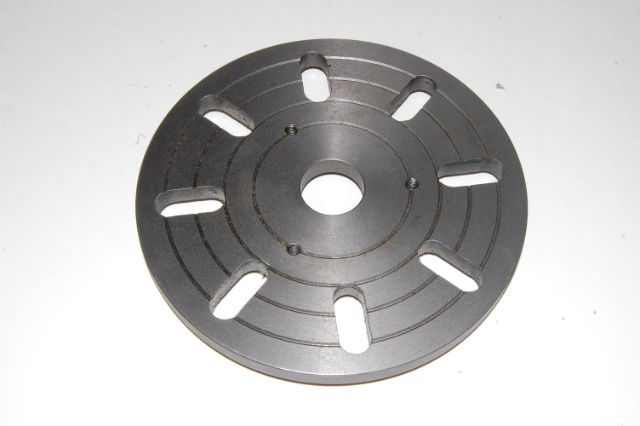
The wood turning rest. how can I say this politely?.... I cant. its junk. The quality is really bad. the problem is the way the tool rest mounts in the holding bar thing (excuse the technical term!) its just a little grub screw holding together a joint that takes allot of stress and it cant cope. At some point I will get this welded (I might even consider doing it myself!) BUT turning wood on the lathe has been an unexpected pleasure. I have turned a series of pens for people for Christmas using wood blanks from Turners Retreat.
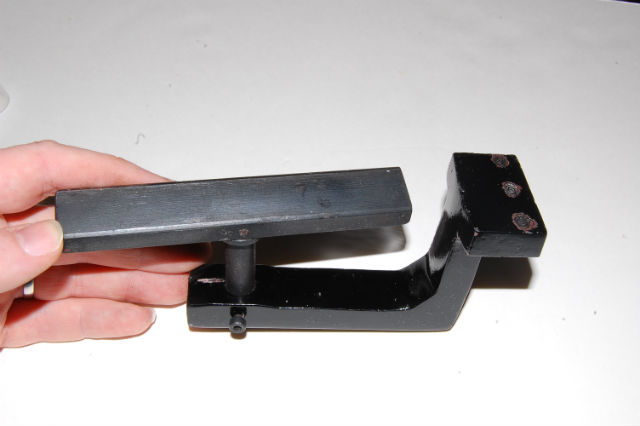
Drill chuck. a very stupid thing for the lathe not to come with as standard. but they are building the lathe to a price and the customer can always order one! I got mine straight from ARC eurotrade at the same time as the lathe. But its defiantly worth noting that its not included with the lathe.

Carbide tooling. I am a total convert to carbide insert tooling. Before I got the lathe I knew I wouldn't be able to grind my own tooling in the house. Its just too messy and if I am to be honest with myself, its never something that I was any good at anyway!! So I ordered a couple of tools. Its worth noting that the standard toolpost cant accept any tooling thicker than 8mm because it puts the top of the tool above the centre height of the lathe (this is something I might correct now I have a milling machine! I may well build a new toolpost for it!
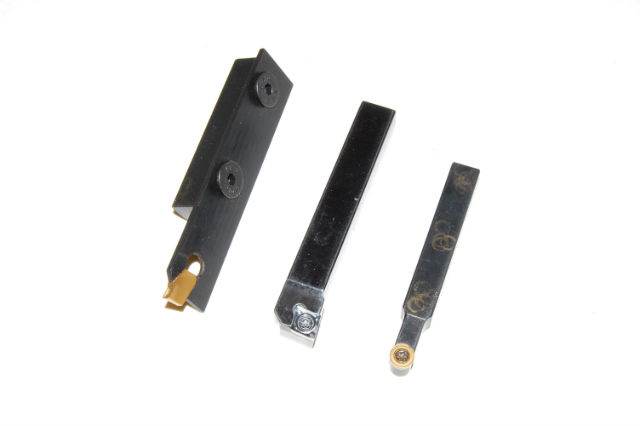
Carbide tooling has the advantage that when a tool dulls or the tip gets broken, you just replace the insert! There are a variety of inserts on the market but I use 2 basic shapes and 2 varieties of them. The first flavour of insert is the general use tip. Its yellow in colour and has a positive rake.
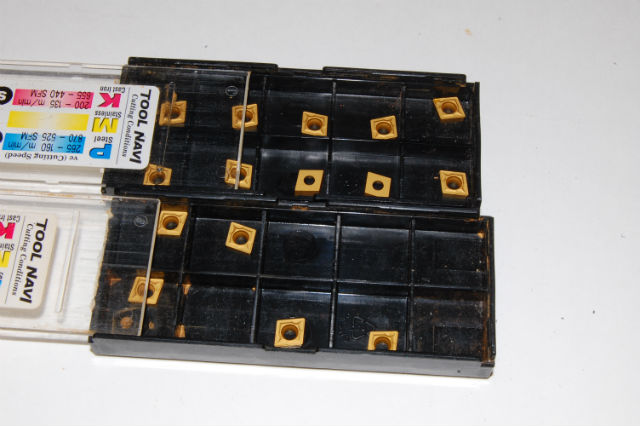
The other is a highly polished tip that cuts brass, aluminium and other non ferrous metals beautifully. Using these tips I have achieved the best finishes I have ever had in my life. They really are THAT good! But be careful not to try and take off too much in one go-they bite!

Most of my tooling is from Glanze. but I also have a set of boring bars. from Cromwell industrial. they are superb!
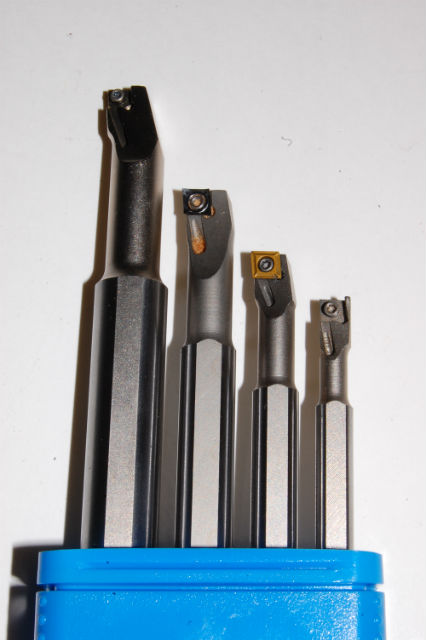
For one of my projects, I invested in a rotating tailstock chuck. I'm afraid this was a bit of a disaster. I could never get the runout down to acceptable limits. There was a piece I needed to grip at the tailstock end but I couldn't use a dead centre because it would mark the piece. I thought I could get away with holding it in the rotating tailstock chuck. But it proved to be a fruitless exercise. It just wasn't good enough.

Conclusion.
It all comes down to how much you are willing to spend. There is an enormous amount of snobbery surrounding model engineering and lathes in particular. The bottom line that I am sure allot of people ask themselves is simply is this as good as a Myford?
In many respects no. I have used both and the tailstock on a Myford is far better than mine. The overall rigidity of the machine is far better on that massive cast Myford bed. Its also hardened which the Chinese one isn't. BUT there are a growing number of knackered Myford about and this is an important point. I can phone up and order any part for my lathe straight off the shelf don't know the current status of Myford but the last I heard they had basically been reduced to a cottage industry. I have no confidence that they will continue to manufacture parts to their previous high standard.
Myford lathes are quite old fashioned by today's standards. There is noting wrong, but these days I would expect a tapered roller bearing in the headstock. I would expect more modern electronics than I have seen on Myford lathes (with the possible exception of the rather short lived 254 model). I want something that looks more modern and not like it just came out of a 1970's sales brochure!
Myford lathes are incredibly rigid. Thanks largely to the massive casting they use as a bed. But that also adds weight. There is no way I could have put a Myford in my upstairs spare bedroom. There is no way I could have got it up the stairs and even if I could, I would have needed to reinforce the floor!!
Cost.... the great elephant in the room! My lathe, complete with all the accessories comes to perhaps £1100. If I were to go and buy an Ex-factory Myford with a similar spec, I wouldn't get much change from £4000. This just cant be ignored.
Is there anything people can do on a Myford that I cant do?
At the moment yes. Myfords can index the headstock far more easily than I can using attachments that are available (I am working on indexing the spindle of my 7x but I am just not there yet).
They can take deeper cuts than I can due to that more rigid bed meaning they can complete the task faster.
They have their T slotted cross slide that I don't have (although I understand its now being produced as a spare part for the 7x lathe and if I see one I will defiantly get it!) but then I have a milling machine so the importance of this feature is somewhat nullified. (perhaps 30 years ago when home workshops generally had a lathe but a milling machine was a real luxury this feature was of greater importance).
But I have no doubt that as people come to appreciate the 7x lathe in its newer more refined guises this will change. 20 years ago, the standard home workshop had a Myford lathe. I predict that soon (if it hasn't happened already) it will have a 7x lathe and an SX2 mill.
Peter
WHEN USING POWER TOOLS OR SOLDERING, MAKE SURE YOU ALWAYUS TAKE PROPPER SAFTY PRECAUTIONS. ALWAYS WEAR SAFTY GLASSES AND BE SURE TO WASH YOUR HANDS AFTERWARDS.



